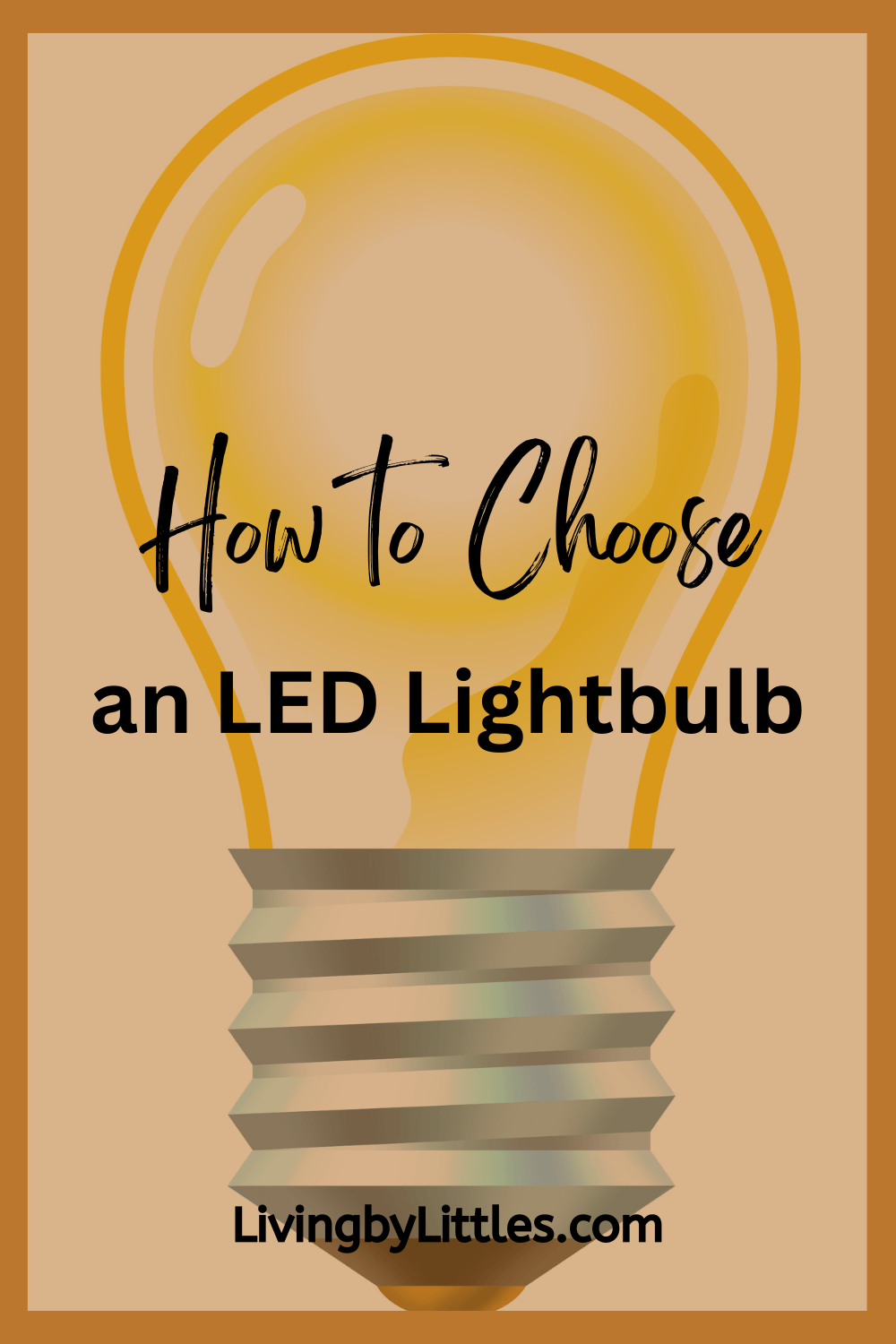Are you baffled by how to choose an LED lightbulb now that incandescent bulbs are a thing of the past?
A few months ago, I ran into a store to pick up lightbulbs and was caught completely unaware.
First came sticker shock, followed by the realization that the bulbs I was used to purchasing were no longer on the shelf.
Assuming it was a fluke, I headed to a second store, sure I would find my usual lightbulb.
Wrong!
After much searching, I realized that the 100 watt, incandescent light bulb on which I had relied for years, was a thing of the past.
A kind salesclerk took pity on me and gave me a crash course in the basics of how to choose an LED lightbulb.
The information was helpful and I am going to assume I’m not the only one in the dark when it comes to how to choose an LED lightbulb. 😉
First, like me, you may wonder what happened to incandescent lightbulbs.
The lightbulb with which most of us are familiar, really is a thing of the past.
Legislation introduced a decade ago was continually tightened until it led to a ban on selling incandescent lightbulbs.
The ban went into effect on August 1, 2023.
As your lightbulbs burn out, plan on replacing them with a more energy efficient LED lightbulb.
How can you tell how bright an LED bulb will be?
Am I the only one who didn’t realize that watts are not a measure of brightness?
Watts are actually a measure of energy used.
Lumens is the measure of brightness for LED lightbulbs.
Even though most packaging for LED lightbulbs shows a watt equivalent, look for the number of lumens.
The higher the lumens, the brighter the bulb.
When choosing an LED lightbulb, consider light appearance.
Light appearance is actually a tone that is measured in Kelvins.
Lower Kelvin light is a warm light and has an amber appearance to it.
Higher Kelvin light is a cool light and provides almost a fluorescent look.
LED lightbulbs range from warm to cool in appearance.
Look for the scale on the package. There is a little arrow showing where that particular bulb falls on the scale.
Figuring out personal preference takes trial and error.
Different light appearances may work better in different parts of the house.
Although, for consistency, I prefer to use the same warm tone light throughout my house.
A word of caution if you have dimmable switches in your home.
Not all LED light bulbs are dimmable. If you have dimmable lights in your home, make sure to buy a dimmable light bulb.
However, not all dimmable LED lights are compatible with all dimmable switches.
Check the website of the bulb you are using to see if it’s compatible with the switch in which you want to place it.
Note: dimmable light bulbs are a little more pricey than their non dimmable equivalent.
Plan on a higher upfront cost to purchase new LED bulbs.
The theory is that the higher upfront cost will save money in the long run.
LED lightbulbs are designed to last longer and use less energy to operate.
Since I just purchased my first pack of four LED lightbulbs (for $22.99), I can’t yet confirm either of those theories.
Are you baffled by how to choose an LED lightbulb?
With just a little bit of basic information, you will be good to go…confidently into the lighting aisle!
_______________________________________________________________________________
TAKE ACTION!!!
Comments or questions? Email me at Micki@LivingbyLittles.com
Check out Micki’s Little Letter
Like It? Share It! It’s a little thing that means a lot to me!
____________________________________________________________________________________

